When we encounter abstract art in the modern context, it often sparks debate and even controversy. Many question its legitimacy, asking, “Is this really art?”
However, abstract art isn’t a fleeting trend; it has deep historical roots and is significant in art. As we delve deeper, we’ll explore the essential definition of abstract art and examine 15 unique elements that make it the captivating and impactful genre it is today.
Table of Contents
- What Is Abstract Art? Exploring 15 Unique Elements
- The 15 Elements Of Abstract Art
- Frequently Asked Questions
- Related Questions
What Is Abstract Art? Exploring 15 Unique Elements
The art world is an ever-changing landscape, consistently pushing the boundaries of what is possible. Abstract Art is one of this ecosystem’s most perplexing yet fascinating genres. Its essence is breaking away from traditional representation, offering freedom from established visual references.
But what indeed makes a piece of art “abstract”? To answer this, we must first define abstract art and explore its rich history before diving into the 15 unique elements that set it apart.
What Is Abstract Art?
Abstract art is a style that departs from realistic depiction and represents a subject in a non-literal way. Instead of portraying figures or objects as they appear in the real world, abstract art relies on colors, forms, and visual elements to convey an emotion, concept, or experience.
Originating in the late 19th and early 20th centuries, abstract art emerged as artists sought ways to express themselves beyond the conventional art forms of the time.
Historical Context
The roots of abstract art can be traced back to the Impressionists and Post-Impressionists like Monet and Van Gogh, who began to move away from realism.
However, abstraction found its definitive form in the early 20th century. Artists like Wassily Kandinsky and Kazimir Malevich began to create works entirely detached from reality.
Kandinsky’s “Composition VII” (1913) and Malevich’s “Black Square” (1915) are iconic examples. The rise of Abstract Expressionism in the 1940s and 1950s, spearheaded by artists like Jackson Pollock and Mark Rothko, brought abstract art into the mainstream, setting the stage for its various offshoots like Minimalism, Op Art, and Conceptual Art.
The 15 Elements Of Abstract Art
Now that we’ve established abstract art and its historical background let’s delve into the 15 unique elements contributing to its abstraction.
1. Color
In abstract art, color is often used to evoke emotions or to establish a mood. For example, Rothko’s color field paintings are based on the emotional potency of color alone.
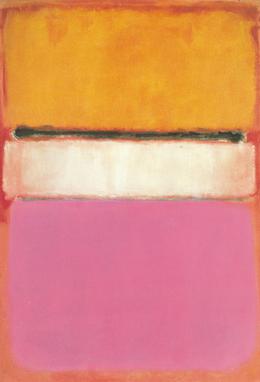
2. Form
Abstract art frequently employs geometric or organic forms to create a visual narrative. Malevich’s use of geometric shapes like squares and rectangles provides a primary example.

3. Line
Lines are used in abstract art to direct attention, evoke emotion, or portray movement. Kandinsky’s early works often used lines to convey musicality.
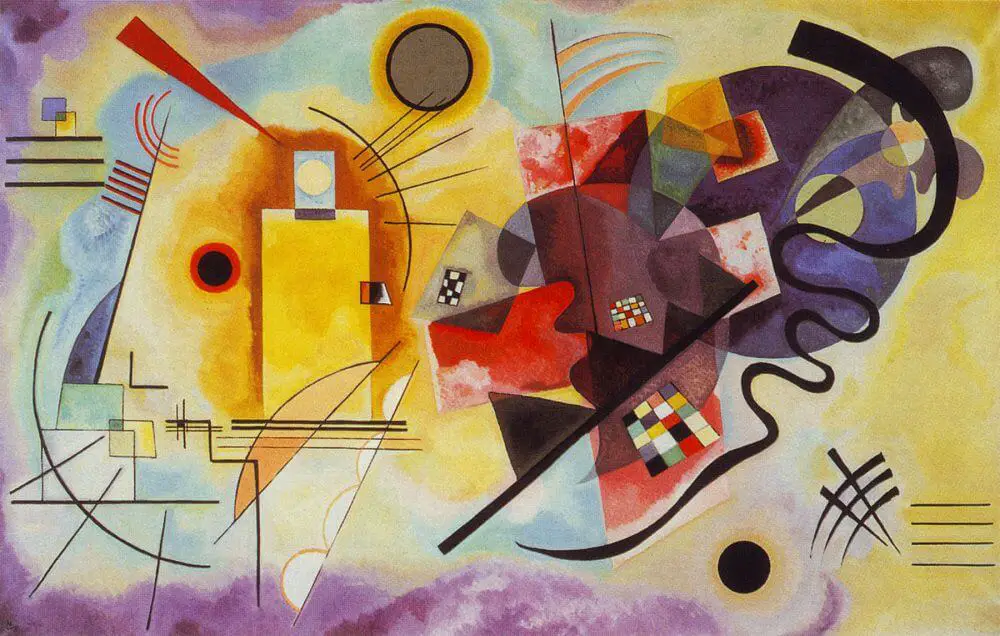
4. Texture
Texture adds a tactile dimension to abstract art, enriching the viewer’s experience. This is evident in works by artists like Jean Dubuffet or Anselm Kiefer.
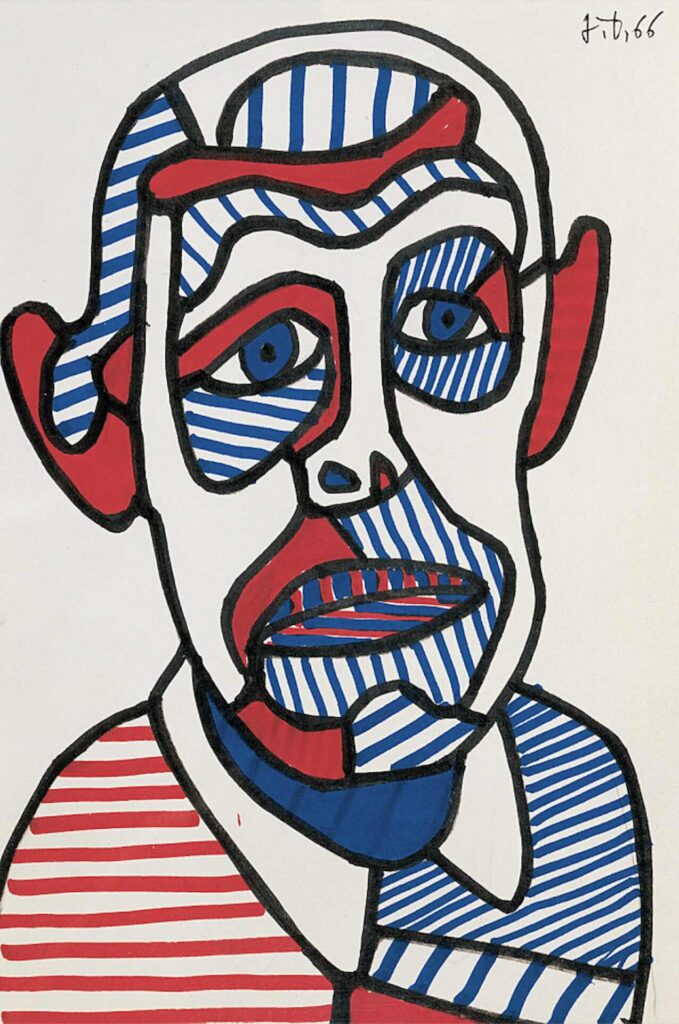
5. Space
Space in abstract art can be used to create depth, proximity, or even to skew perception. Cubist paintings, for instance, deconstruct three-dimensional space into fragmented forms.
6. Composition
The arrangement of visual elements within the piece contributes to its abstraction. Unconventional layouts can challenge our perceptions and expectations.
7. Scale
The size and scale of abstract works can impact the viewer’s engagement with the art. Monumental works, like those by Claes Oldenburg, distort scale to create new contexts.
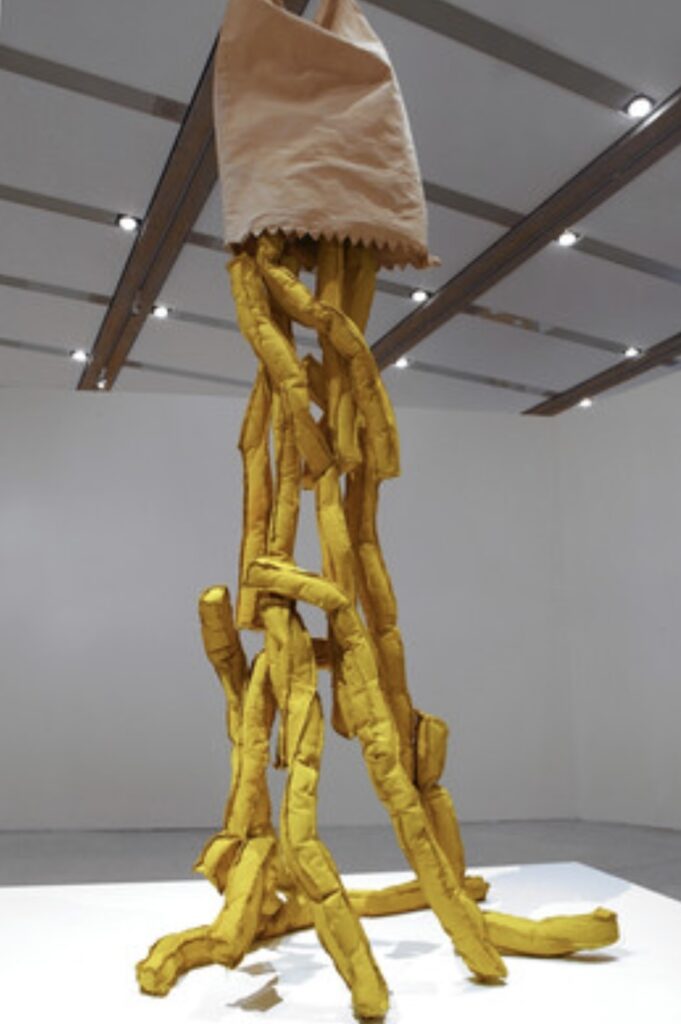
8. Contrast
Contrast in color, form, or texture can draw attention or create dynamic tension within a composition.
9. Balance
While some abstract artists like Pollock used asymmetry to create balance, others like Piet Mondrian achieved equilibrium through strict geometrical order.
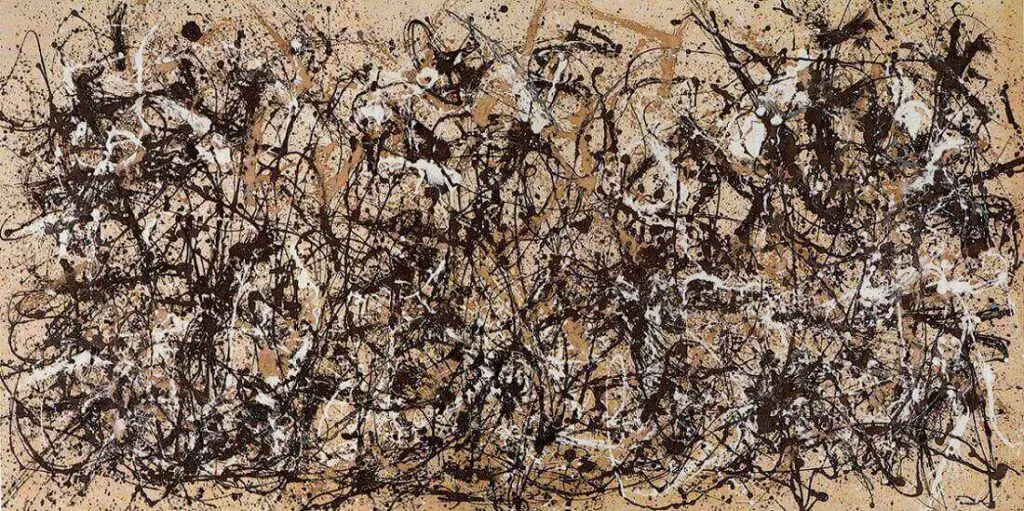
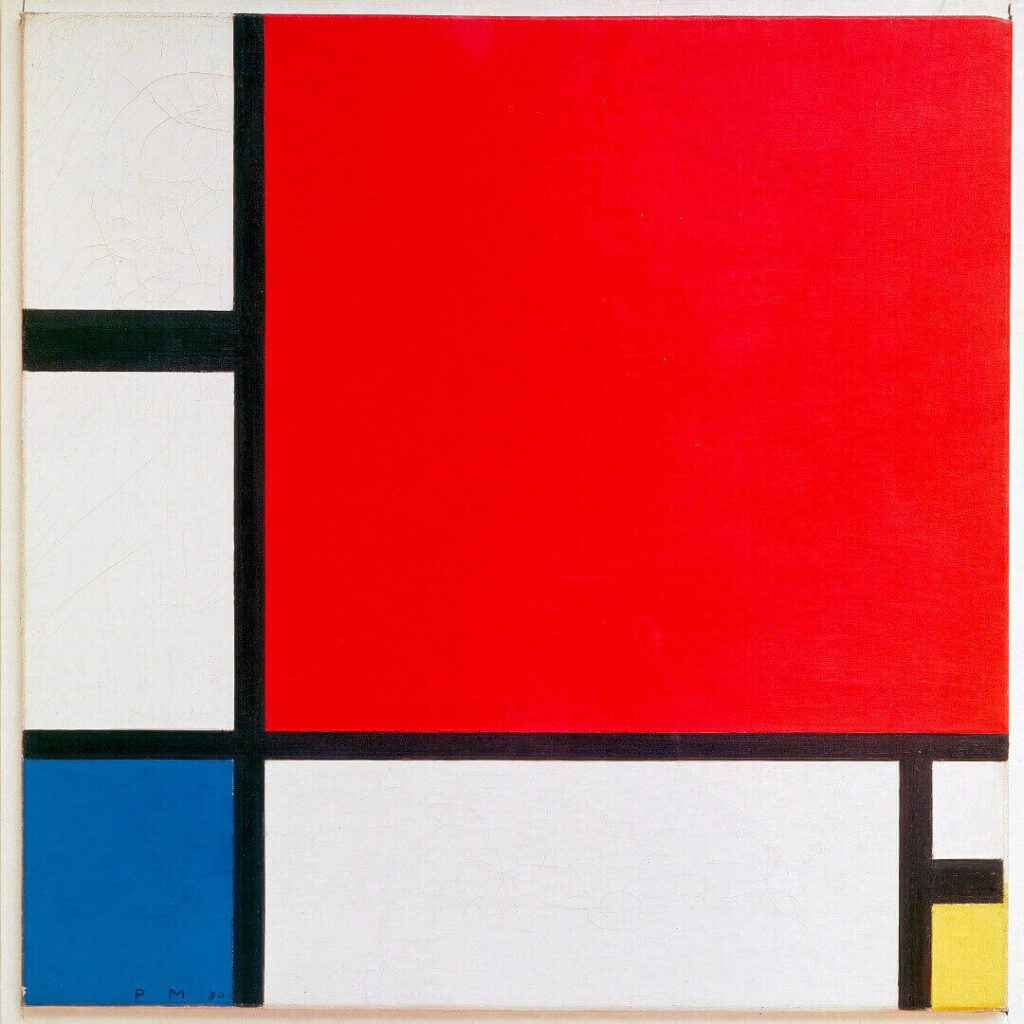
10. Unity and Variety
Abstract art often balances unity and variety, using repetition and divergence to create a harmonious composition.
11. Proportion
Abstract artists like Ellsworth Kelly played with proportion to achieve a heightened emotional impact or to engage viewers in visual puzzles.

12. Movement
Movement can be literal, as in kinetic art, or implied through visual elements that guide the viewer’s eye.
13. Rhythm
Rhythm in abstract art is often achieved through repetition or patterning, much like in musical composition. This can be seen in the works of artists like Bridget Riley.
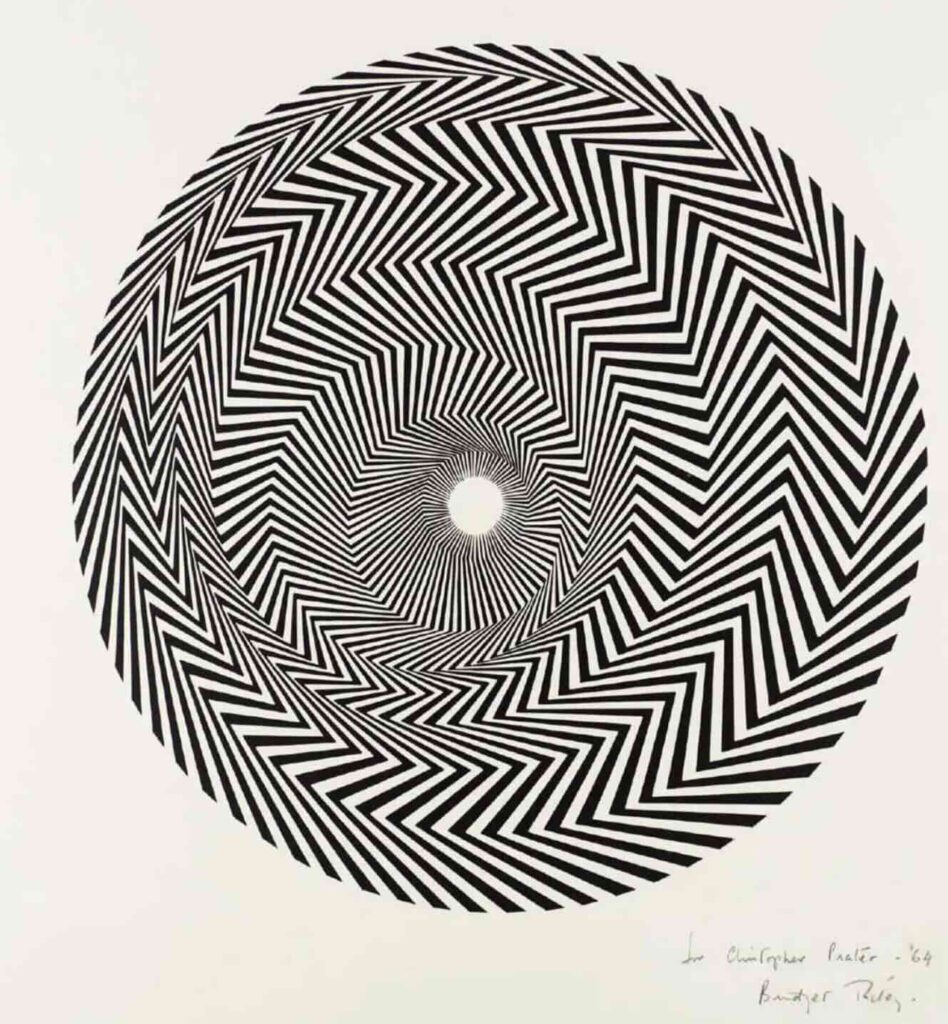
14. Translucency And Opacity
Some abstract artists use varying transparency and opacity to create depth or mystery.
15. Emotional Impact
Lastly, one of the most subjective elements is the emotional impact of a piece. Abstract art often aims to provoke thought, trigger emotions, or create a spiritual experience.
Abstract art is a fascinating and versatile genre that offers boundless possibilities for artistic expression. It exists not merely as a counterpoint to realism but as an art form that engages both the creator and the viewer in a deeply personal way.
Through the interplay of its various elements—from color and form to emotional impact—abstract art offers a complex yet enriching experience that transcends the limits of visual representation.
Understanding these 15 elements can provide a new lens to appreciate abstract art, offering insights into the techniques, themes, and emotional undertones that define this enigmatic yet captivating genre.
Anita Louise Art is dedicated to art education, great artists, and inspiring others to find and create their art. We love art that uplifts and inspires. #ArtToMakeYouSmile! #ArtToMakeYouHappy!
If you want to see any of my art, you can find out more by clicking here. If you are interested in what inspires me and my paintings, you can discover more by clicking here.
We have a free newsletter and would love you to be part of our community; you can subscribe to the newsletter by clicking here. If you have any questions, I would be happy to talk to you. You can reach me, Anita, by clicking here.
Subscribe to our Anita Louise Art YouTube Channel filled with great videos and information by clicking here.
Join us for our podcast “5 Minutes With Art.” Spend just 5 minutes a week with us to discover and learn about great art and artists. You can find out more about our podcast by clicking here.
Frequently Asked Questions
What is abstract art?
Abstract art is a genre that emphasizes elements of form, color, line, and shape over realistic or representational depictions. It often seeks to convey emotions, ideas, or concepts without relying on recognizable subjects.
Why is abstract art considered significant?
Abstract art is significant because it challenges traditional artistic norms, encouraging viewers to engage with their emotions and interpretations. It pushes the boundaries of creativity and opens up new possibilities in artistic expression.
When did abstract art emerge?
Abstract art emerged in the late 19th and early 20th centuries, with pioneers like Wassily Kandinsky and Kazimir Malevich leading the movement. It gained momentum as artists sought alternatives to realistic representation.
Is there a specific meaning in abstract art?
Abstract art often lacks a clear, concrete meaning, allowing for a wide range of interpretations. The meaning can vary from artist to artist and viewer to viewer, making it a highly subjective experience.
What distinguishes abstract art from other art forms?
Abstract art distinguishes itself by its departure from realistic representation. Instead of depicting recognizable subjects, it focuses on non-representational elements like color, form, and line to convey ideas and emotions.
Are there different styles within abstract art?
Yes, abstract art encompasses various styles, including Abstract Expressionism, Cubism, and Geometric Abstraction, among others. Each style has its unique approach to non-representational expression.
Do artists follow a specific set of rules in abstract art?
While there are no strict rules in abstract art, artists often explore principles like balance, contrast, and unity. However, the freedom to experiment and innovate remains a defining characteristic of the genre.
How do artists choose colors in abstract art?
Color choices in abstract art are subjective and driven by the artist’s intent. Some artists may use bold and vibrant colors to evoke strong emotions, while others may prefer a more subdued palette for a contemplative atmosphere.
Can anyone appreciate abstract art, even without an art background?
Absolutely. Abstract art encourages viewers to rely on their personal experiences and emotions rather than art history knowledge. Anyone can appreciate abstract art by engaging with the feelings and ideas it evokes.
Is abstract art still relevant today?
Yes, abstract art remains relevant today and continues to evolve. It provides a platform for artists to experiment with new forms of expression and challenges audiences to think beyond conventional artistic boundaries.
Related Questions
Where Can I See Some Frank Lloyd Wright Houses?
Nestled away on West Burnham Street in Milwaukee. Wisconsin is a hidden jewel of Frank Lloyd Wright’s architecture. One block of West Burnham Street has some duplexes, and houses were all designed by Frank Lloyd Wright, specifically for the time’s working classes. Today, all those structures on West Burnham Street in Milwaukee still testify to this great architect.
You can read more by checking out the blog Frank Lloyd Wright’s American System-Built West Burnham Street Homes by clicking here.
Who is the Artist Carl Heinrich Bloch?
One of Denmark’s greatest artists, Carl Bloch, almost did not become an artist. His parents wanted him to join the Navy, but he was obsessed with art and became artistically gifted early in life. Throughout his life, he painted many vital paintings. One of his most crucial art commissions was to paint 23 scenes from the life of Christ at the Frederiksberg Castle in Denmark. Later in life, he became a very skilled printmaker. Carl Bloch was married and had eight children. Both Carl and his wife Alma died relatively young.
You can read more about Carl Bloch by reading our blog entitled 18 Facts About The Artist Carl Heinrich Bloch (1834 – 1890) by clicking here.
What Are The Characteristics Of The Arts And Crafts Movement?
The Arts and Crafts movement started in Britain and swept over Europe and the United States. The movement started to become both famous and very influential in the late 19th century and changed how many artists worldwide viewed their art. It also changed how artists saw the design of their artwork, buildings, fabrics, wallpaper, parks, cities, and objects in their homes and offices.
You can learn more by reading What Are The Characteristics Of The Arts And Crafts Movement? by clicking here.


